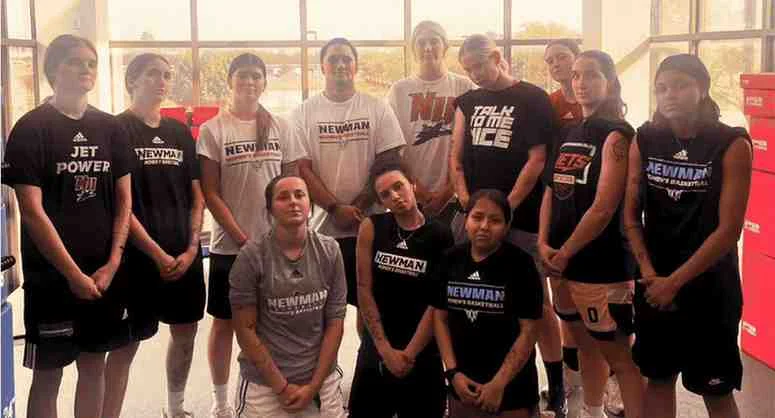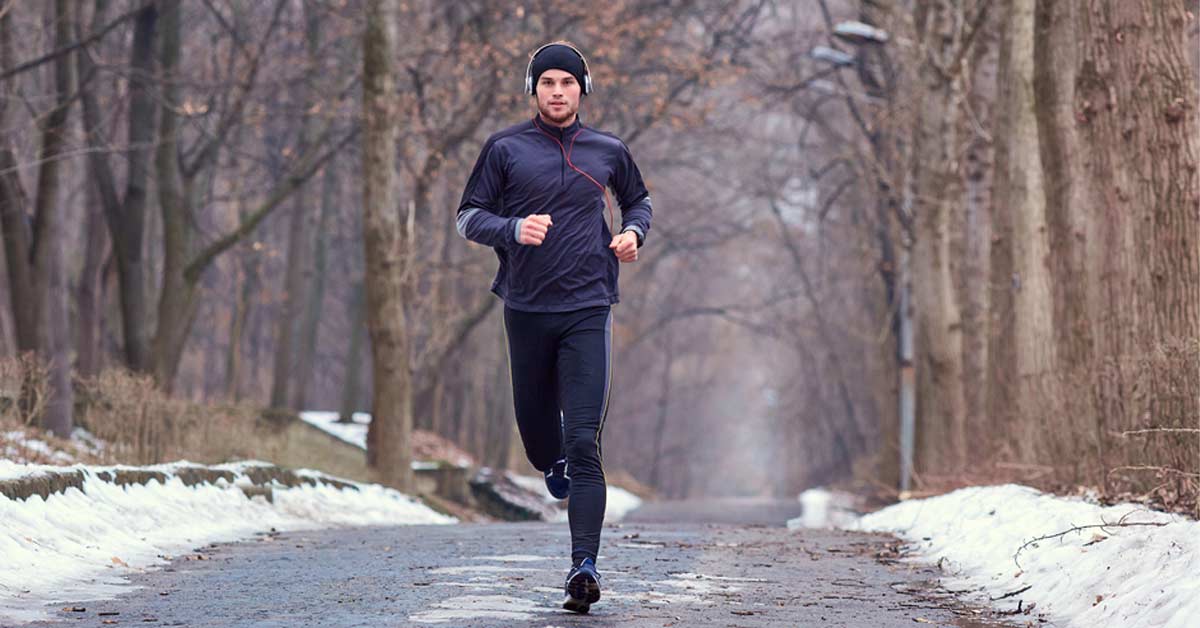
I would like to start by saying that my situation and experiences are in no way unique. It is quite the opposite, really. Most track and field coaches encounter less-than-stellar situations daily and are forced to problem-solve on the fly. (No pun intended.) Triton Regional High has no fieldhouse, no indoor track, and not much in the way of equipment. Often, the lines between general prep, specific prep, and competition cycles of training are completely blurred.
Earlier in my career, I lamented these challenges. I would walk into practice with one plan and become frustrated when it wouldn’t come to fruition. That was my coaching ego crying out, mistakenly thinking that my workout was going to be the reason these athletes did well.
In the end, the ‘what’ and ‘where’ seldom seem to matter as much as the ‘why’ in training. Share on XAs I deepen my understanding of the sport, I am learning to embrace this perpetual “sub-maxness.” It is still our job to provide the best experience that we can for the athletes and put them in a position to succeed, even if it is months down the road during the outdoor season. In the end, the “what” and “where” seldom seem to matter as much as the “why.”
The Problem: Weather
New England winters are notorious for being harsh. A 35-degree day in January or February is a blessing and often means that we are outside. Most coaches probably have a mental number when it comes to temperature, where they no longer care to venture out into the tundra for fear of injury. If our track is clear, we often have to battle the stiff, marsh winds that come blowing across it. The wind can easily make it feel like 25 degrees. It’s not exactly fun for a high school kid. There are a couple of days each week that it makes sense to be outside, but once the snow inevitably covers the ground and the black ice rears its ugly head, we are forced to look elsewhere.
The Cold and Snow Solution
One of our weekly staples is hill repeats done fast at their goal time for the day. Running on the hill in 35-degree weather adds a layer of strength and seems to prevent injury. I say “seems” because lots of coaches seem to differ on this thought, but I can say we have never had an injury doing a lactate workout on a hill. Anecdotal evidence aside, the hill helps our athletes keep their posture honest out of necessity.
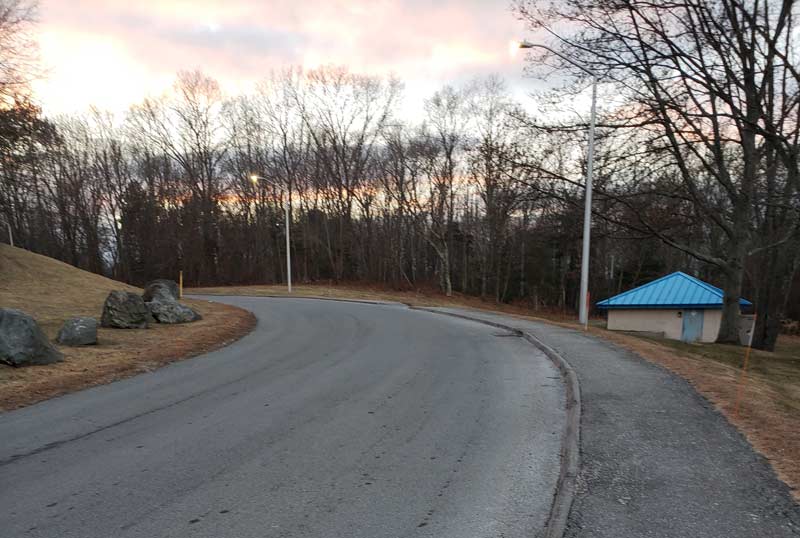
On the rest interval, they gather inside the school’s cafeteria. The athletes have a menu of drills to do to stay loose once inside. Among the favorite choices are loose skips, single leg-A skips, ankle pops, and calf dribbles. At the very least, they stay warm and ingrain a little more awareness of their posture for their hill running. I also find that this prepares them for some of the invitational meets at the Reggie Lewis Center, where the officials gather them en masse for each event and they seldom get adequate warm-up space or freedom to roam.
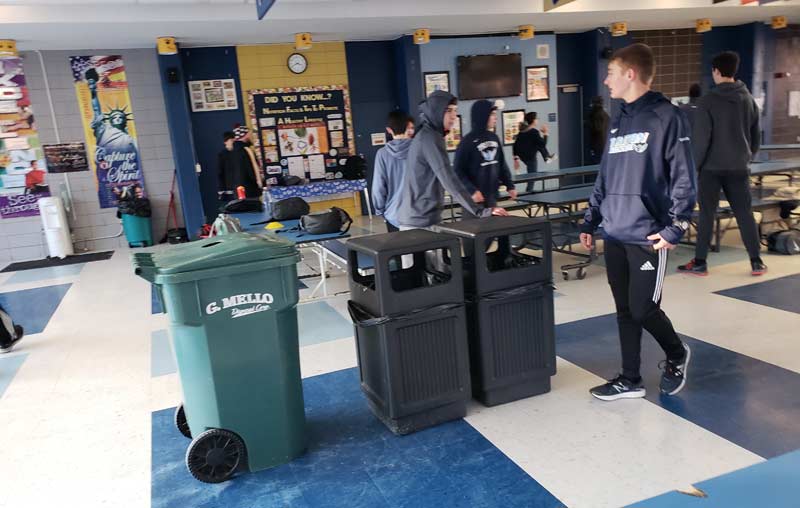
If it is too cold to be outside, we will find some space inside, whether it be a hallway or basketball court. Most of our true speed workouts are done in hallways. If we can’t get on the hill for a lactate workout, we try to sneak in a “cone workout.” I set four different colored cones out at 10m (red), 20m (yellow), 30m (orange), and 40m (white). I call out a color and they sprint through each cone while decelerating safely. They walk back and do another rep. I grab a pen and keep track of the total volume.
Short sprinters might do 200-300 meters and long sprinters 400 meters. Sometimes I cut someone from the workout at a random time if things get too ugly. If we feel competitive later in the season, they might go head to head with someone near their race time in their event. We may do a second set if it is mid-season. So far, the most volume that the seasoned veterans have done is 400 meters and then a 200-meter set with ample rest between. It isn’t the fanciest plan, but it accomplishes the goal of going to the “dark place.” It also makes being stuck indoors a little less boring.
The Problem: Limited Space Indoors
As mentioned previously, Triton is not blessed with a fieldhouse. What we do have is a basketball court with lines painted around it. This means most of our speed work is done without spikes. This is essentially sub-maximal sprint training. Forty degrees or more and sunny means we are outside on the track.
As coaches, there are times we walk in with a great plan only to find that an eighth-grade basketball game has our time slot. For example, here is a workout plan I was fairly excited about. I thought every group would get in what they needed, with exercises to prime their projection, event-specific start work, and ending with a jump.
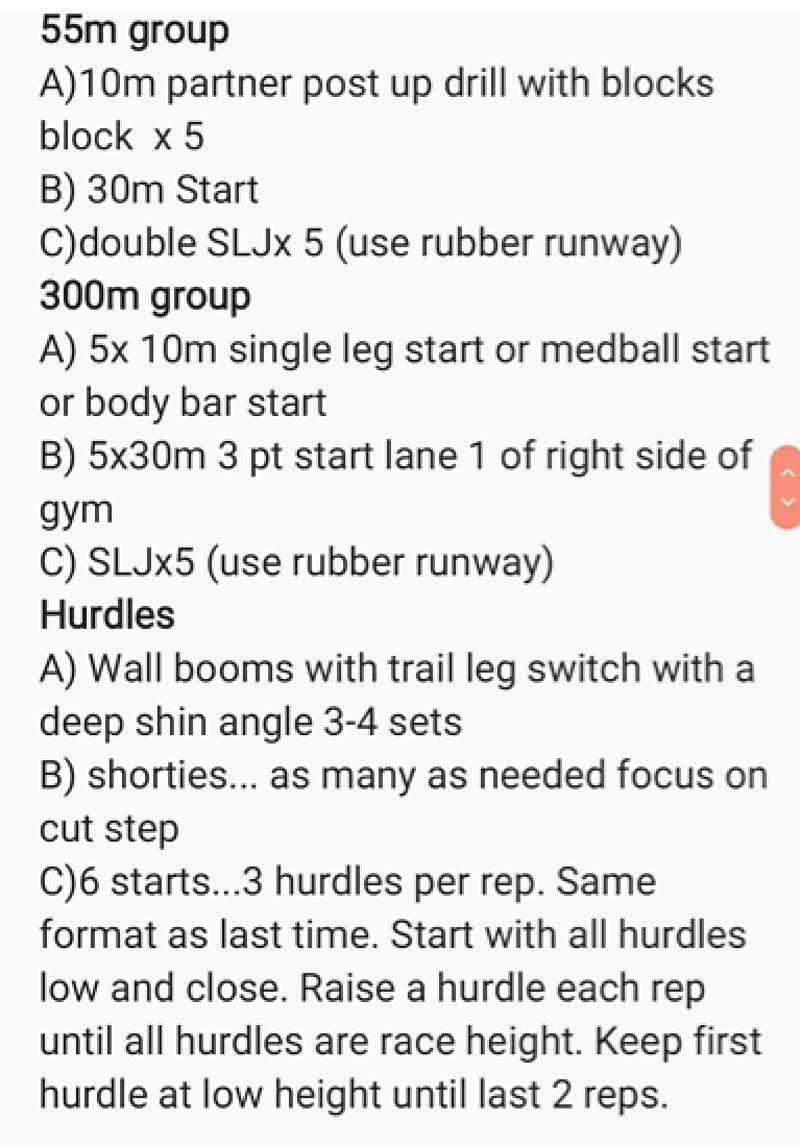
But it wasn’t to be. Here is a text exchange I had a short while later with one of my captains…
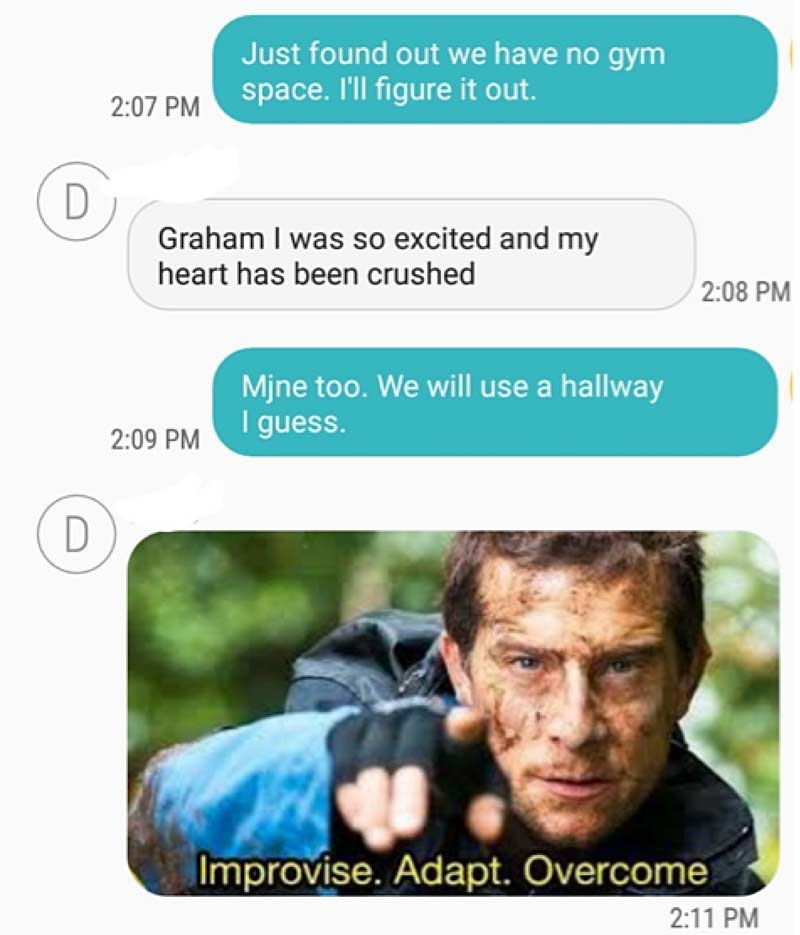
There was a moment of frustration and panic that followed. After regrouping, I realized my original plan wasn’t going to make or break our season. What actually ended up happening was something that looked like this.
It went okay. It was not exactly what I wanted, but there are simply too many unknowns to not be flexible. Our athletes got something in that moved them a little further along.
I had someone message me asking if my athletes have shin issues when we do this. The answer is no. Hallways are hard, sure, so we just keep it even more shallow. The first two exercises were 10 meters each, and I cut the block start from 30 meters to 20 meters and they survived another day. I coach the movement and skill free of concerns about the number of reps. If they dial in and look good, they will do less.
#Regeneration can be just a chance to slow down and let concepts saturate their minds and limbs, says @grahamsprints. Share on XThe next day we did an ankle, foot, trunk, and hip circuit that kept them from pounding too much, when typically, they would not have done those two days back to back. Sometimes regeneration is just a chance to slow it down and let some concepts saturate their minds and limbs.
When the time comes and we are outdoors permanently, I know our work indoors on the small things (which really are the big things) will carry over.
The Complex Solution
One of the biggest changes this year is using complexes to supplement a perceived lack of true maximal sprinting. I don’t profess to know as much about these sprint complex concepts as Gabe Sanders or the ALTIS coaches. Maybe I am way off base and you wouldn’t do it this way either, but if we only have 30 meters of space I might consider the following complex:
5 Rounds
- 20m wickets
- 20m overhead calf dribble or 3x overhead stair walks
- 5x max pogos in place (stiff ankles needed to sprint)
Maybe it makes sense to you to have the wickets second, not first. Or maybe you hate this exercise programming. I guess it depends on the athletes in front of you. The point is that there are options.
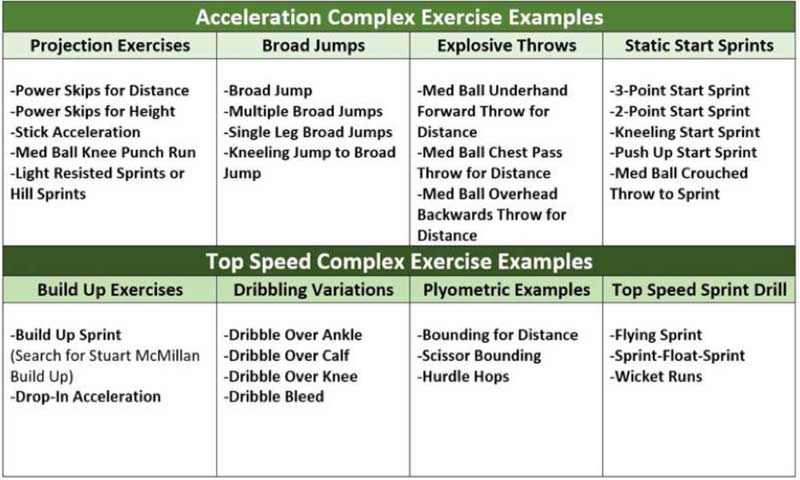
One of the challenges here is using a gradual spacing with wickets that most kids can do without kicking the wickets all over the place, overstriding, or being severely jammed. I call it “McDonald’s wickets”—one size fits all, like fast food. I usually start at 4’9” and add 3 inches every two or three hurdles depending on the group and time of year.
Dribbling is usually done with the arms overhead, holding a light bar. Kids that can’t dribble might find themselves walking stairs with a bar overhead. We safely use whatever space is available to get them a little more exposure to top speed concepts. At this age, simple will get results. I almost never plug bounds into a complex. My athletes are terrible at bounds. If I am going to have them bound, then they experiment and do a few reps in their warm-ups until I see something close to technical proficiency.
Conversely, if I suddenly see that gym space has changed and there is an opening, I may scrap what I had planned and maximize the use of the gym. This may mean reshuffling the entire week. In my mind, as long as the tasks for the week are accomplished, I consider that a bit of a win and the sequencing and modality take a backseat as long as common sense prevails.
The Problem: Limited Equipment
Having limited equipment has grown to be a problem that I enjoy solving. We have a small weight room with a few usable med balls (anything over 12 pounds, in my opinion, is not usable) and bands. This is pretty typical of most high schools, regardless of the region. We don’t have 1080s, run rockets, or Just Jump mats. Those things would be nice, but the reality is you can get around them. Simple is the way to go because simple things are repeatable and can be practiced regardless of constraints.
Simple is the way to go: Simple things are repeatable and can be practiced despite constraints, says @grahamsprints. Share on XWe do have stairs, walls, bands, body bars (could use PVC pipes or hurdle top), and hurdles. Consider it a return to the grassroots-style of training, using only what is in front of you. All of these can serve as means to do remedial drills or to teach acceleration. Stairs and PVC pipes/body bars are two pieces of equipment that can be used in many ways.
For example, I love using the 6-pound body bar for a variety of exercises. A PVC pipe section or a hurdle top could be used to add something different to the mundane. Marching with a bar overhead is often included in the sprint drills to remediate posture, trunk movement, and pelvic positioning. Bleeding that march into an A-skip is another progression athletes can easily do.
We frequently teach athletes the hip hinge using the bar as the dowel on regeneration circuit days. We have also used body bars to add a dimension to ankle pops and dead bugs.
Ten-inch stairs are the perfect height to work on absorbing and landing with proper mechanics, says @grahamsprints. Share on XStairs are another overlooked training ground for the high school athlete. Most stairs are about 10 inches high. This is the perfect height to work on absorbing and landing with proper mechanics. An athlete who can handle a little more can do the same drill from the second step. We have about two boxes in our gym that are usable based on their height. The stairs are a nice alternative to have when working with a decent-sized group.
We have four sets of blocks. When designing workouts, the logistics are important. It sometimes becomes about who is using what equipment and when. Plenty of athletes never use blocks, so this makes it easier. Structuring or staggering the workouts ensures that one group of athletes is in one area with certain equipment while another group is in another location.
I always feel like my kids are not getting enough of the concept work behind the theme workout. I have tried eliminating mindless reps of blocks and flys without prior prep work. They can’t fix what they don’t understand. Based on my athletes, it is necessary for my repertoire of activities that support the theme of acceleration and max velocity to include items that are equipment-free or close to it. They need to feel postures and positions because they forget every week and need to constantly revisit these ideas.
An underclassman getting four years to work on these things, instead of just focusing on being fast and trying to make the varsity lineup, can set themselves up for success much later. Of course, trying to sell them on that is a topic for another day. Here are some of my favorite no equipment/no space substitutes for different themes.
Acceleration Activities
- Wall drill w/post-up drill (hold for 5 seconds, can use a med ball for additional challenge to the trunk)
- Wall drill switch callout (“1,” “2,” and “burst”)
- Boom-booms (Popularized by Tony Holler and Chris Korfist)
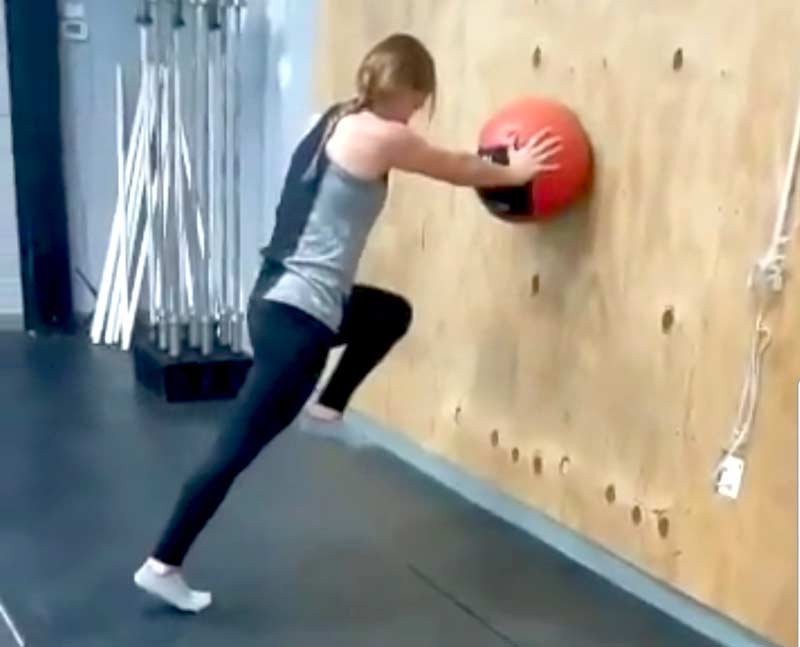
Max Velocity Activities
- Stair marches, hands on hips
- Banana hurdle dribbles
- Chalk lines for wicket spacing (same cues of “drive over and step down” or “bounce over” or “run through the tall grass”)
- 1-2-3-3s
Anticipate, Don’t React
Take stock of what you have and make it work. Training can be slow and boring indoors, but adding equipment to certain drills can spice them up. Using menu activities centered around certain themes can add more shallow reps without the pounding in the hallways. Choosing when and where to go outside can limit injuries and free athletes from the hallways once in a while. Volume and intensity may not be what you want, but skill acquisition can be.
You have plenty of equipment and space at your disposal if you look for different ways to use them, says @grahamsprints. Share on XThere is plenty of equipment and enough space at your disposal if you look for different ways you can use them. When the season is over, the athletes will still be moving better, and hopefully won’t have completely hated their experience.

